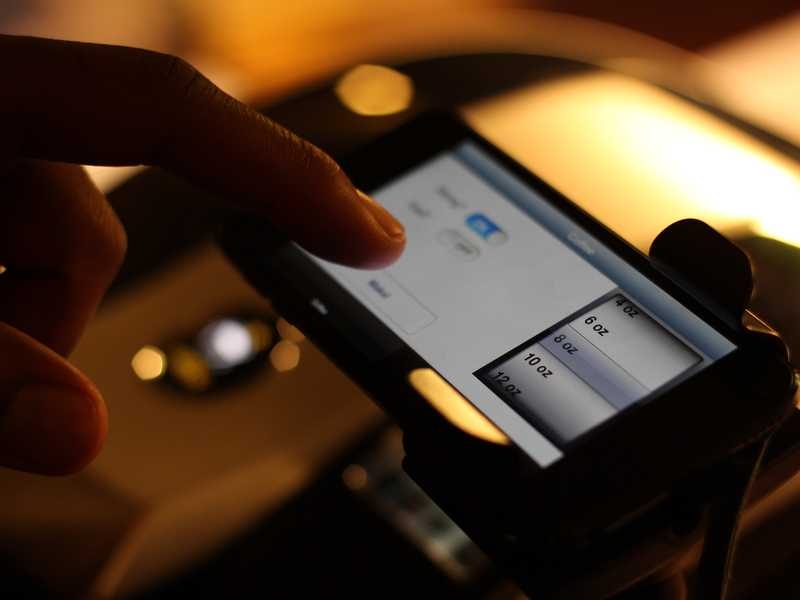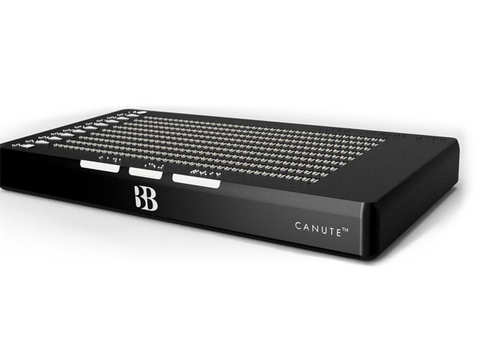Voice-Activated Assistive Devices: Simplifying Regular Tasks
Voice-Activated Assistive Devices: Simplifying Regular Tasks
Blog Article
Enhancing Lives With Advanced Assistive Tools for the Blind
The integration of innovative assistive gadgets for the blind is transforming exactly how individuals experience their surroundings and interact with their areas. What does this advancement mean for the future of assistive innovation and its function in equipping people?
Introduction of Assistive Tools
Assistive devices for the blind include a varied array of technologies and devices developed to improve freedom and enhance the lifestyle for individuals with visual impairments. These devices satisfy numerous needs, from navigation and movement to interaction and everyday task monitoring.
One of the primary classifications of assistive tools includes flexibility help, such as white walking canes and guide pets, which aid individuals browse their environments safely. Digital traveling help, geared up with sensing units and audio comments, likewise play a significant duty in mobility enhancement.
Furthermore, tools that help with daily living tasks, such as flexible kitchen tools, Braille labels, and talking watches, encourage individuals to execute tasks individually. Communication aids, including display viewers and Braille screens, help with access to info and enable people to involve properly with the electronic globe.
Furthermore, low-tech solutions like multiplying glasses and large-print products continue to be crucial for many individuals. Jointly, these assistive devices offer not only as practical tools but also as important enablers of freedom, fostering greater engagement in a globe that usually focuses on sighted experiences. Their assimilation right into day-to-day live is necessary for promoting inclusivity and boosting overall health for those with aesthetic impairments.
Innovative Technologies in operation
Advancement in innovation has actually dramatically transformed the landscape of tools readily available for individuals with visual impairments. Amongst one of the most notable advancements are clever glasses integrated with enhanced truth, which provide real-time navigating help and item recognition. These tools take advantage of progressed video cameras and synthetic knowledge to supply auditory signs, boosting the customer's spatial awareness and freedom.
Furthermore, mobile applications have actually arised as powerful resources, making it possible for users to recognize money, checked out message out loud, and navigate unknown environments via spoken instructions. Tools such as Braille display screens and refreshable Braille devices remain to develop, using seamless connection with computer systems and mobile phones, therefore enhancing communication and accessibility to details.
Wearable technology, consisting of smartwatches furnished with voice-activated attributes, better empowers customers by helping with quick accessibility to alerts and alerts without requiring visual involvement. Tactile maps and 3D printing are additionally acquiring traction, using tangible depictions of spaces that aid in orientation and flexibility training.
Collectively, these innovative technologies not just enhance the every day lives of visually impaired people but likewise foster better independence, inclusivity, and engagement with the broader community, thereby improving understandings of availability. (Mobility aids for visually impaired users)
Individual Stories of Empowerment
Empowerment often emerges from personal experiences that highlight the transformative effect of modern technology on individuals with aesthetic impairments. Take, for example, the tale of Sarah, a young musician who reclaimed her passion for painting via making use of a smart walking cane geared up with obstacle detection. This tool not only promoted her mobility however instilled a newly found self-confidence, allowing her to browse public areas individually and pursue her imaginative undertakings.

These narratives underscore the profound impacts that advanced assistive devices can have on life. By enabling individuals to get over obstacles, innovation promotes a sense of freedom and self-worth. Such empowerment stories work as a testimony to the capacity of development, showing just how the right devices can substantially improve lifestyle and open doors to brand-new opportunities for those with visual problems.
Benefits of Advanced Solutions
The combination of sophisticated technology right into assistive tools substantially transforms day-to-day experiences for those affected by vision loss. OCR devices for the blind. Instruments such as clever walking canes equipped with sensing units, navigating applications, and wearable technology are designed to offer real-time feedback, boosting spatial awareness and minimizing the risks linked with movement.
Additionally, progressed assistive modern technologies promote social incorporation by helping with communication and communication. Voice-activated gadgets and applications permit individuals to gain access to information and engage with their environments separately, breaking obstacles that previously impeded their engagement in instructional, professional, and social setups.
On top of that, the personalization and versatility of these solutions accommodate the varied requirements of customers, thus improving their overall high quality of life. Boosted functionality, such as object acknowledgment and text-to-speech capacities, empowers people with visual disabilities to do jobs that they may have as soon as discovered testing. Eventually, advanced assistive modern technologies not just improve independence and safety however also promote dignity and self-worth, allowing users to lead satisfying lives.
Future Trends in Assistive Tech
As technology proceeds to develop, the landscape of assistive gadgets for the blind is poised for impressive improvements that will certainly better boost ease of access and freedom. Emerging fads in assistive innovation show a change toward boosted integration of expert system (AI) and artificial intelligence, allowing devices to adapt to individual user requires in real-time. These technologies my sources are anticipated to facilitate even more user-friendly navigation systems that can identify barriers and give audio feedback, considerably improving outside mobility.
In addition, the development of wearable tech, such as smart glasses equipped with enhanced reality, will enable users to receive contextual information regarding their environments, consequently improving their spatial recognition. Innovations in haptic technology guarantee to produce tactile comments tools, enabling individuals to regard details via touch, improving knowing and interaction with their atmosphere.
Telecommunication breakthroughs are also paving the method for remote support options, where qualified experts can supply advice by means of video calls, guaranteeing support is readily obtainable. As these patterns unfold, the future of assistive gadgets for the blind will definitely promote greater freedom, equipping individuals to navigate their globe with self-confidence and convenience.

Final Thought
The combination of advanced assistive devices for the blind stands for a considerable development in cultivating freedom and boosting high quality of life. By utilizing ingenious technologies, these gadgets equip individuals to navigate their settings with better self-confidence and freedom. As the area continues to progress, continuous research and development will likely yield even more advanced remedies, additionally transforming the lived experiences of individuals with visual disabilities strong reading glasses and promoting a better sense of addition within culture.
The assimilation of innovative assistive devices for the blind is changing how people experience their environments and connect with their neighborhoods. The integration of advanced modern technology into assistive gadgets considerably changes daily experiences for those influenced by vision loss.As modern technology continues to evolve, the landscape of assistive tools for the blind is poised for amazing innovations that will certainly further boost access and freedom. Arising trends in assistive modern technology show a change toward enhanced assimilation of synthetic knowledge (AI) and maker learning, making it possible for devices to adjust to specific customer requires in real-time.The integration of sophisticated assistive devices for the blind represents a substantial innovation in promoting freedom and boosting top quality of life.
Report this page